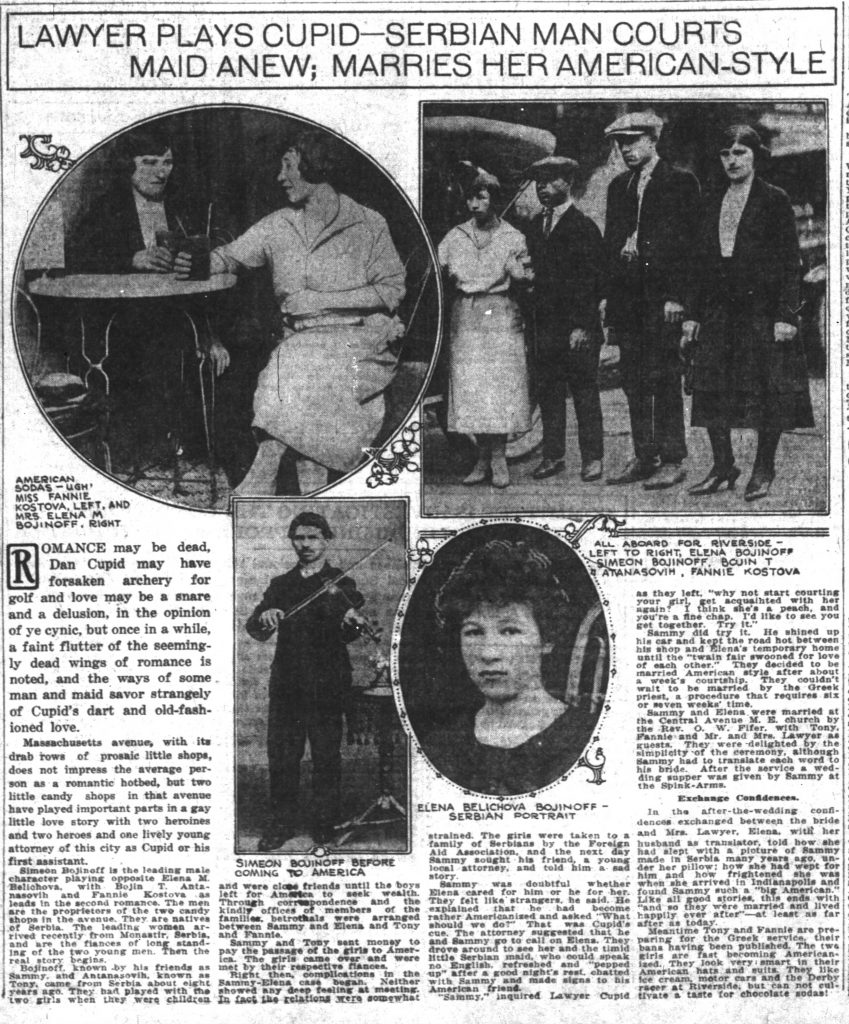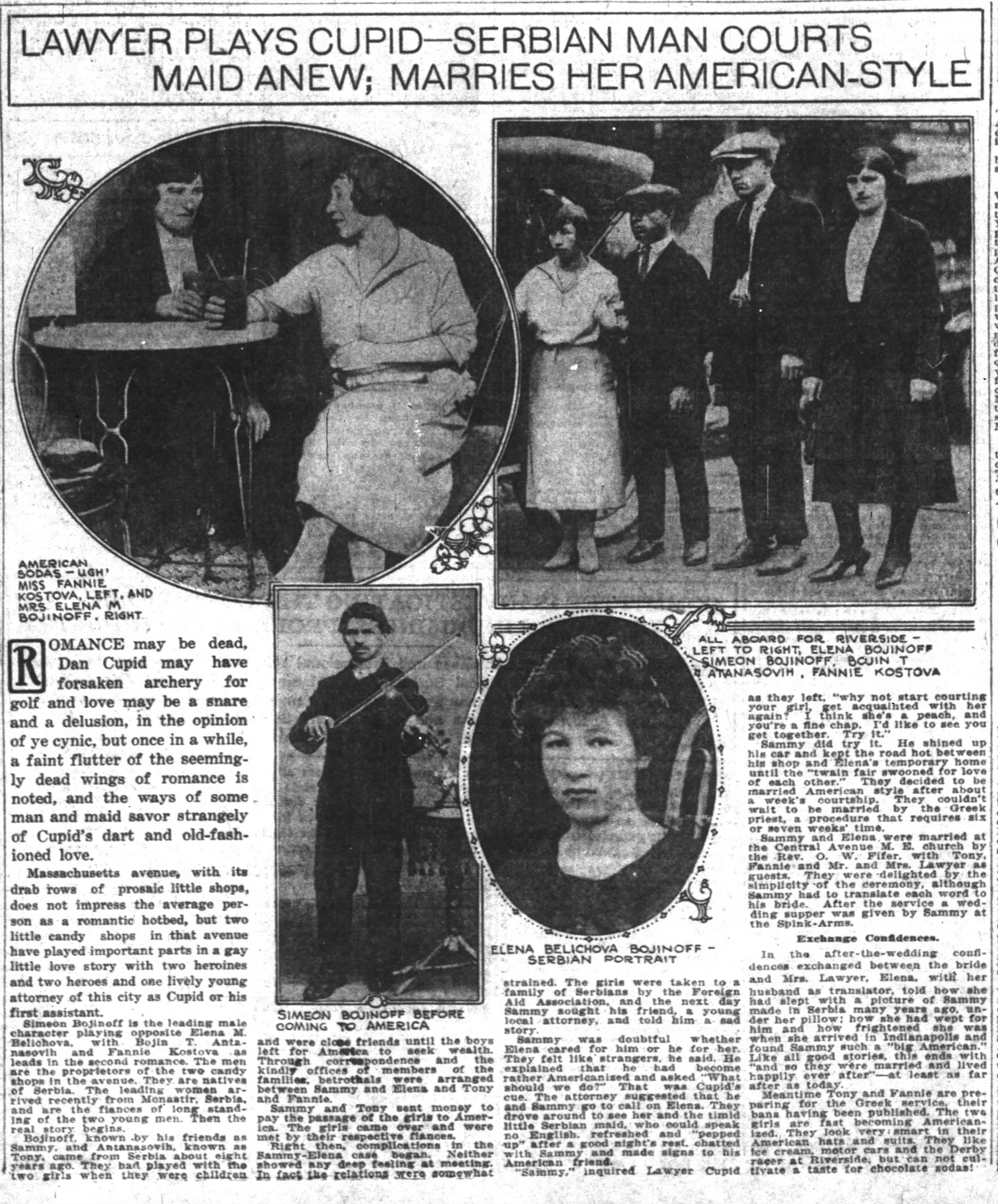Bookkeeper John Peterson (Jovan Perich, 1886-1978) was the first Serbian immigrant to arrive in Indianapolis from Prizren in Old Serbia in 1904. Other men soon followed, found work at meat packers, and formed the largest Old Serbian community abroad. During , however, many heeded King Peter I’s appeal to overseas Serbians to return and defend their land; many became casualties. After 1920, Serbian men were joined by their families or brides-to-be from their war-ravaged homeland. Many operated restaurants, taverns, billiards parlors, and barbershops in the 400-600 blocks of West Washington Street. In the 1930s, they moved near West 16th Street and Tibbs Avenue and into .

Serbian citizens organized St. George Lodge #245 Serbian National Federation and a companion St. George Lodge affiliated with the Jedinstvo Federation. A tamburitza orchestra kept alive Serbian music and kolo dancing in the city. In 1931, these groups dedicated the Serbian National Home at 3626 West 16th Street. They also sponsored national observances and provided food and clothing for Serbian prisoners of war during .
At first, Serbian citizens had no permanent church or priest. They held discussions in private homes near Kingan’s and worshipped in nearby Greek, Romanian, or Bulgarian churches. On March 12, 1950, 30 members organized St. Nicholas Serbian Orthodox Church. Parishioners belong to the Serbian Orthodox Free (anti-Communist) Diocese, headquartered in Grayslake, Illinois. Their dead are usually interred in Floral Park Cemetery (see ).
Conscious of traditional culture, Sam Salatich organized the Yovan Duchich Choir in 1957. The St. Nicholas folklore dance group was founded in 1984. Cooperating with their Romanian and Bulgarian coreligionists, the Serbs attracted attention in the broader community by sponsoring the first Balkan Festival in 1992. The church hosts the popular Indy Serb Fest annually.
While the 1910 federal census reported 43 Bulgarians, Serbs, and Montenegrins in the city, the Serbian contingent was estimated at around 300 residents by the 1990s.
*Note: This entry is from the original print edition of the Encyclopedia of Indianapolis (1994). We seek an individual with knowledge of this topic to update this entry.

Help improve this entry
Contribute information, offer corrections, suggest images.
You can also recommend new entries related to this topic.
